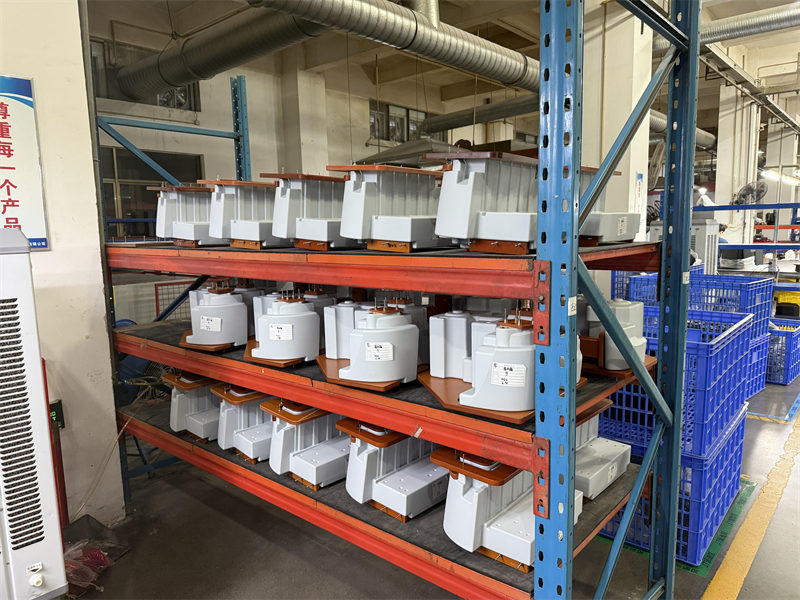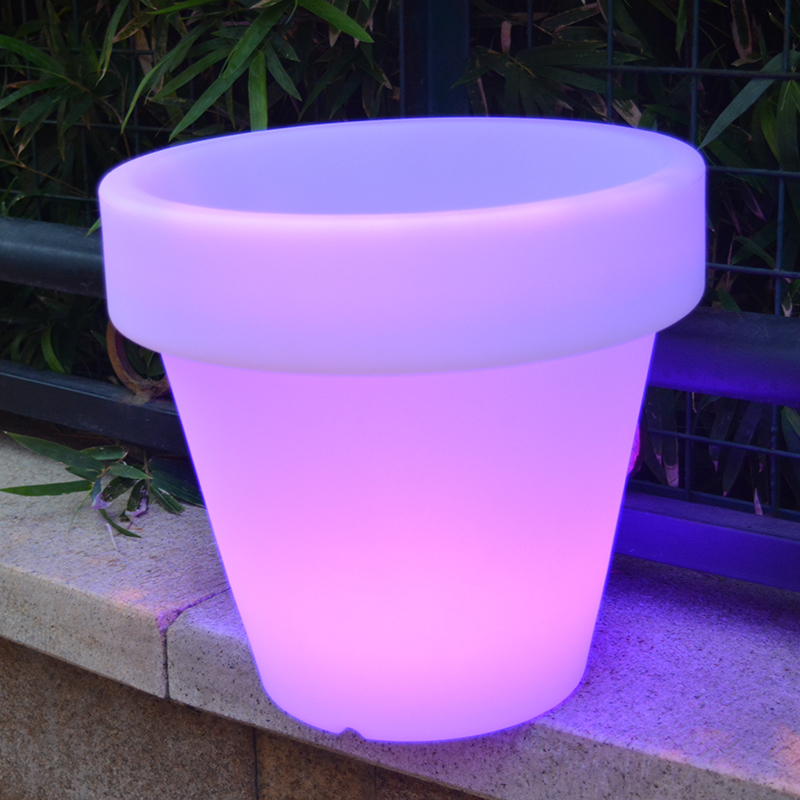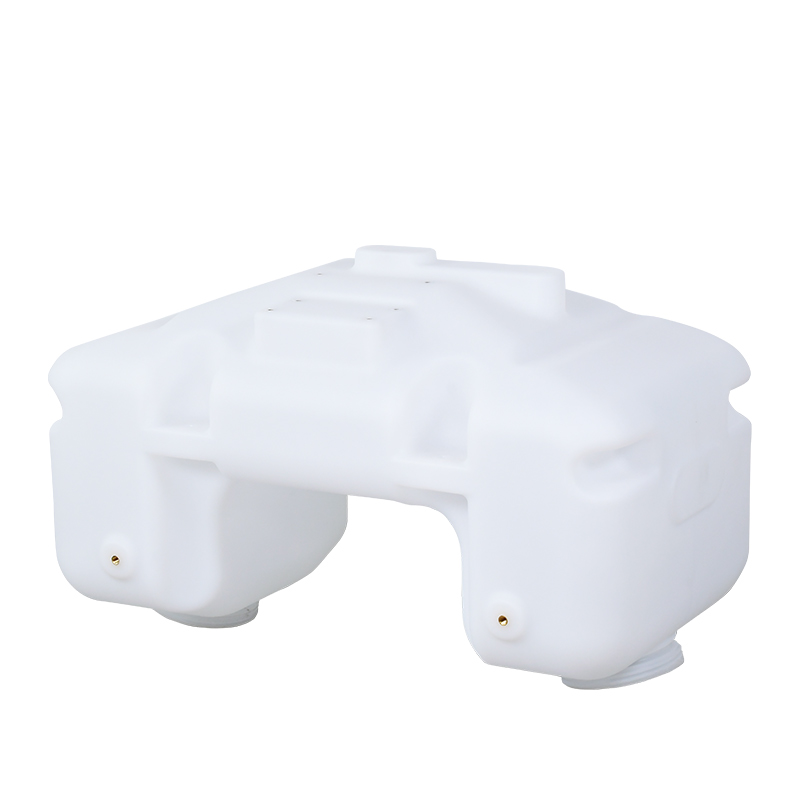What Are the Common Applications of Rotomolded Products
 Jun 15,2025
Jun 15,2025

What Are the Common Applications of Rotomolded Products?
Rotomolded products, formed through rotational molding, offer high design flexibility and durability, making them widely used in various industries. Here are their common applications
1 Industrial Sector
- Industrial Components: A variety of industrial parts such as covers, housings, water softening tanks, tote bins, etc., can be manufactured by mean of rotational molding technique. For instance, protective covers for industrial equipment, housing shells for machinery, and other components that provide protection and support for equipment.
- Ventilation and Duct Systems:Products like ventilation hoods and air recovery units can be created with rotational molding process. They are widely used in industrial ventilation systems to ensure air circulation and quality in factories and other industrial settings.
- Storage Tanks and Containers: Rotational molding is capable of producing commercial, industrial, and agricultural storage tanks ranging in size from 5 gallons to 22,000 gallons, as well as various containers for packaging and material handling. These include water tanks, chemical tanks, fuel tanks, and raw material transport containers. They feature large capacity, durability, corrosion resistance, and leak-proof properties, meeting the storage and transportation needs of different industries. Here is the custom water storage tank we manufactured for use in cleaning robots.

2 Agricultural and Farming Sector
- Livestock and Poultry Farming Equipment: Such as animal shelters, animal enclosures, feeders, waterers, feeding troughs, etc. These rotomolding products are durable, weather-resistant, and easy to clean, providing a favorable environment for animal husbandry.
- Agricultural Storage Facilities: Including grain silos, fertilizer tanks, storage containers, etc., which help farmers store agricultural products and fertilizers safely, preventing moisture and spoilage.
- Irrigation and Water Systems: Large water tanks for farms, livestock watering troughs, and chemical spray tanks that resist agricultural chemicals and withstand outdoor conditions.
3. Automotive Sector
- Automotive Body Parts: Some vehicle body components like roofs, fenders, doors, etc., can be produced using rotational molding. These parts are lightweight yet strong, helping to reduce vehicle weight and improve fuel efficiency.
- Interior Components: Dashboard panels, bumpers, fuel tanks, etc., can be manufactured. Rotomolded automotive interior parts offer good impact resistance and dimensional stability.
- Functional Components: Various storage boxes, plastic toolboxes, etc., can be installed inside vehicles for storing tools and other items.
- Recreational Vehicle (RV) Parts: Water tanks, waste tanks, and exterior storage compartments for RVs, designed to fit complex shapes and withstand vibration.
4 Marine and Boating Sector
- Boat Components: Such as water tanks, buoyancy devices, seats, and storage compartments on boats. Rotomolded boat components are waterproof, durable, and resistant to seawater corrosion, ensuring their performance and lifespan in marine environments.
- Watercrafts: Kayaks, canoes, pontoons, etc., can be produced via rotational moulding process. Rotomolded watercrafts are lightweight, strong, and have good buoyancy and stability, providing a safe and comfortable experience for water activities.
- Marine Safety Equipment: Navigation buoys, safety booms (nautical safety barriers), debris barriers for hydropower plants, etc., can be manufactured by rotational moulding process to meet safety requirements in marine environments.
5. Construction Sector
- Pipes and Fittings: Various pipes and pipe fittings can be roto molded to meet the needs of water supply, drainage, gas supply, and other systems in construction projects.
- Building Materials: Such as hollow bricks, insulation panels, etc., which can enhance the energy efficiency of buildings.
- Safety and Barrier Products: Road barriers, traffic cones, and safety dividers that are impact-resistant and easy to move (often filled with water or sand for stability).
- Landscaping and Urban Furniture: Products like planters, urban furniture (benches), signage elements (bollards, beacons), park and garden equipment, etc., can be created to beautify urban environments and improve public spaces. Below is the luminous garden planters we made at Light Venus.

6. Sports and Leisure Sector
- Sports Equipment: Golf carts, footballs, juggling pins, helmets, dumbbells, golf tee markers, etc., can be manufactured. Rotomolded sports equipment is durable and meets the requirements for sports performance.
- Leisure Products: Children's toys, playground equipment such as slides and swings, camping gear like coolers and water jugs, boat storage boxes, snowmobiles or quads, motorsports parts and accessories, floating docks, floats, etc., can be roto molded with non-toxic materials and designed to withstand heavy use. These cater to people's needs for leisure and entertainment.
- Fitness Equipment: Some fitness equipment components, such as equipment casings and handles, can be manufactured using rotational molding.
7. Consumer Goods Sector
- Outdoor Furniture: Outdoor furniture, such as chairs, tables, are often produced through rotational molding. The process allows for large, seamless structures that are weather-resistant and durable, withstanding prolonged outdoor exposure to sun and rain.
- Light Fixture: Rotomolded light fixtures are weather-resistant and suitable for gardens, pools, or public spaces. Branded companies often use this technique for lightweight yet sturdy designs.
- Household Items: Shelving, storage cabinets, plastic bathtubs, sinks, storage boxes, large storage bins, trash cans, and pet houses, etc., can be created with rotational moulding process. These items are practical and convenient for daily use.
- Consumer Electronics Accessories:Such as housings for small electronic devices, protective covers, etc., can be manufactured via rotational moulding process. Rotomolded consumer electronics accessories offer good impact resistance and insulation properties.
8. Medical and Healthcare Sector
- Medical Containers: For example, medical waste containers, hazardous product storage cabinets, etc., can be produced. These containers are sealed and leak-proof, effectively preventing the spread of medical waste and ensuring the safety of medical environments.
- Medical Equipment Components: Some components of medical equipment, such as protective covers and casings, can be manufactured using rotational molding. These components are easy to clean and sterilize, meeting the hygiene requirements of medical settings.
9. Logistics and Transportation Sector
- Storage Containers: Garbage bins, recycling bins, bulk handling units, etc., can be produced with rotational moulding process. Rotomolded storage containers are durable, lightweight, and leak-proof, facilitating the storage and transportation of goods.
- Transportation Equipment Components: Components for trailers, storage boxes in trucks, etc., can be manufactured. These components enhance the functionality and practicality of transportation equipment.
10 Custom and Specialized Products
Artistic sculptures and decorative items with unique, intricate designs are made possible by rotomolding’s exceptional design flexibility. Additionally, rotomolding is ideal for producing durable portable shelters, equipment cases, and fuel containers designed to endure the rigors of harsh field environments
Key Advantages Driving Their Use
- Cost-Effectiveness: Suitable for low-to-medium production runs, as mold costs are lower than other molding methods.
- Design Flexibility: Allows complex, hollow, and seamless shapes with uniform wall thickness.
- Durability: Products are often impact-resistant, corrosion-proof, and able to withstand extreme temperatures.
- Material Variety: Common materials include polyethylene (PE), polypropylene (PP), and vinyl, which can be tailored for specific needs (e.g., food-grade or chemical-resistant).
Rotomolding’s versatility continues to expand its applications in emerging fields like renewable energy (e.g., wind turbine components) and sustainable design.
 Tel: 0086-13632687993
Tel: 0086-13632687993  Email: roto@lightvenus.com
Email: roto@lightvenus.com

 Home
Home What are the Advantages of Rotational Moulding in the Production of Medical Equipment
What are the Advantages of Rotational Moulding in the Production of Medical Equipment  You May Also Like
You May Also Like



 Tel
Tel
 Email
Email
 Address
Address








